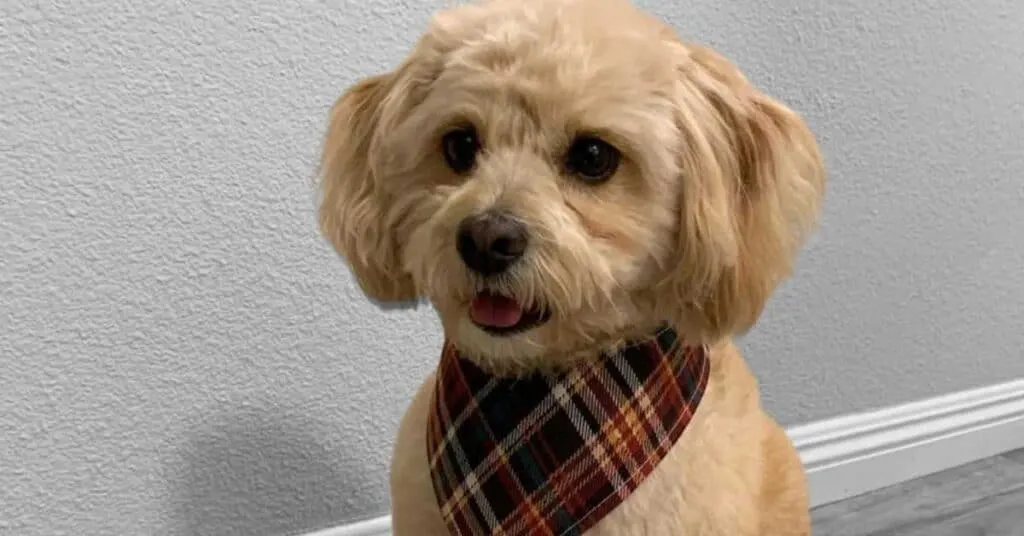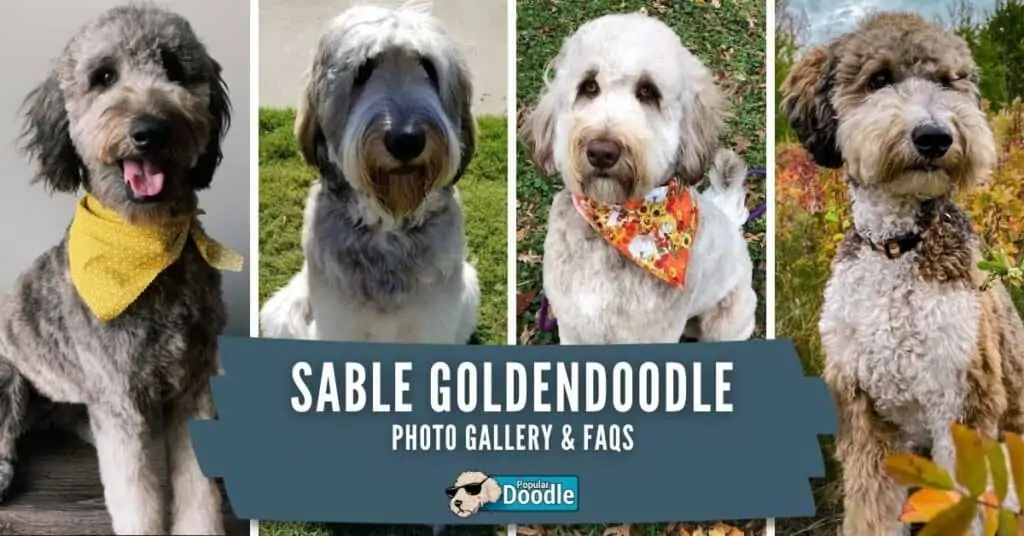
As “designer dogs,” Goldendoodles can come in a variety of intricate, awe-inspiring color patterns. However, these coat color options aren’t always easy for future puppy owners to understand. In this article, we’ll learn more about the rare, yet highly desirable sable Goldendoodle.
So, what is a sable Goldendoodle? A sable Goldendoodle has a coat that features black-tipped hairs with roots of any solid color. These black-tipped hairs can be in any location or pattern across the coat. To help you visualize, this coloring is often described as being like “burnt toast.”
Puppy Coat vs Adult Coat
Sable Goldendoodles will often look drastically different as adults than they do as puppies. Since sable is a fading gene, your dog’s coat will lighten to an almost solid color as they grow older.
Their puppy coat will typically be solid black or have markings similar to that of a phantom Goldendoodle. As they grow older, their coat will quickly change to a white, gray, or light cream color.
If you expect your adult dog to look the same as the puppy you brought home, you’ll be extremely disappointed. However, if you appreciate their coat for the evolving work of art that it is, this Goldendoodle color could be perfect for you!
Sable Goldendoodle Color Examples
The term “sable” simply describes the black tips of your dog’s coat. The rest of your Goldendoodle’s fur can be a wide range of colors such as chocolate, cream, apricot, gray, silver, white, black, fawn, or red. More rarely, you’ll even come across sable merle Goldendoodles, parti Goldendoodles, phantom Goldendoodles, and tricolor Goldendoodles!
Related: 13 Incredible Goldendoodle Colors You Never Knew Existed!
This means you’ll come across a variety of unique looking Goldendoodles with this coloring—each adorable in their own right! Let’s meet some of them below!

Bailey is an F1 mini sable Goldendoodle. In the first photo she’s just a puppy, but in the second photo she’s all grown up at two years old. You can see her coat has lightened to a cream color with the prominent sable markings mostly around her ears and mouth.
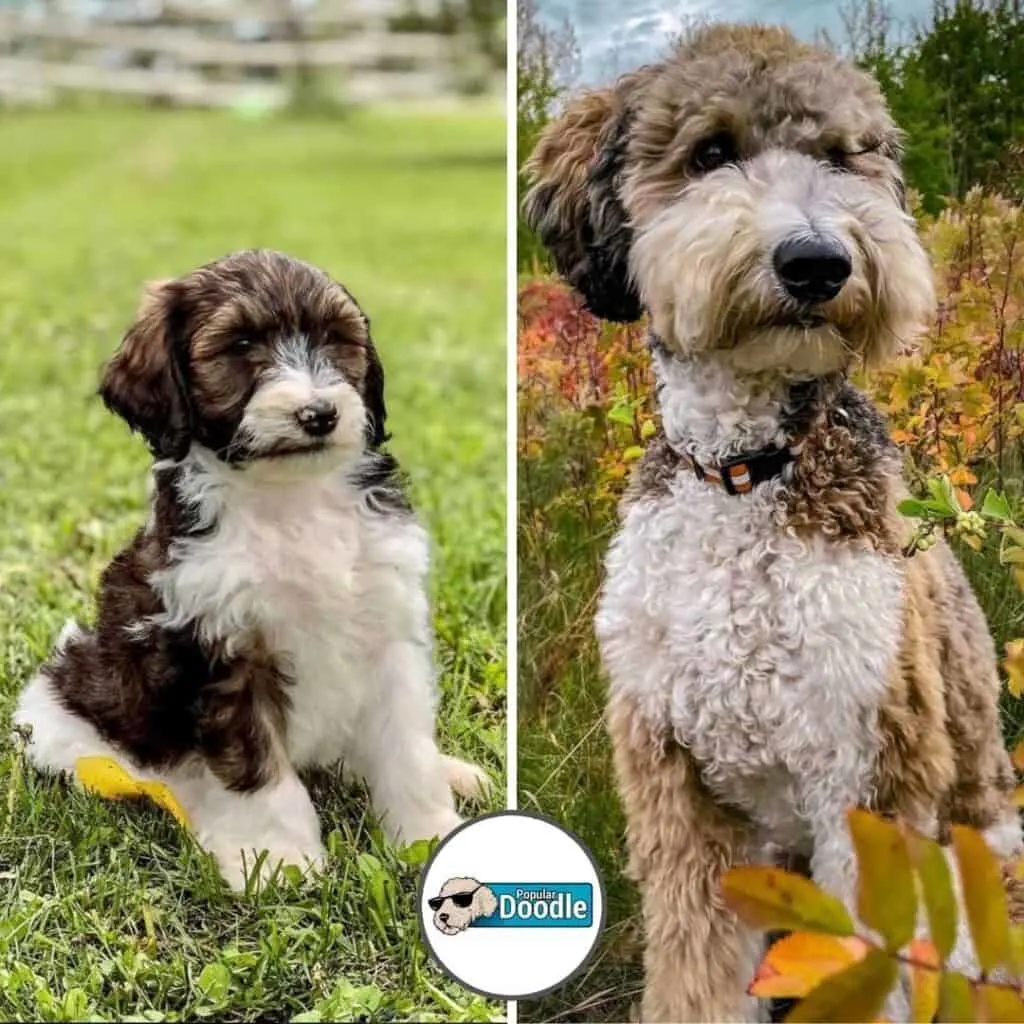
Cooper is an F1B sable parti Goldendoodle who’s coat consists of brown and white. While there hasn’t been a drastic change in Cooper’s coat from the first photo to the second, you’ll notice it has faded pretty uniformly from head to tail.
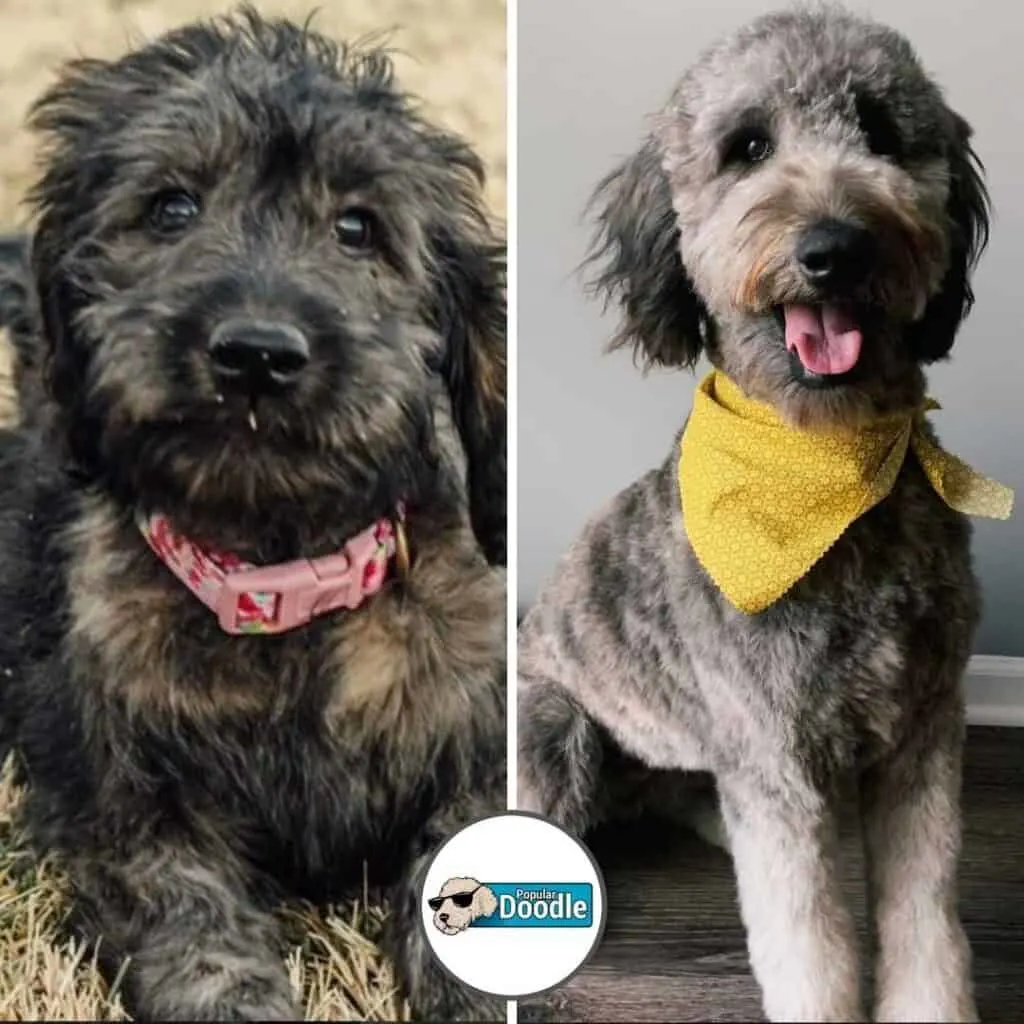
Fenn is a 2 year old F1 Goldendoodle from Kansas. As a puppy she was mostly black but her coat has since evolved into a mesmerizing silver and black combination!
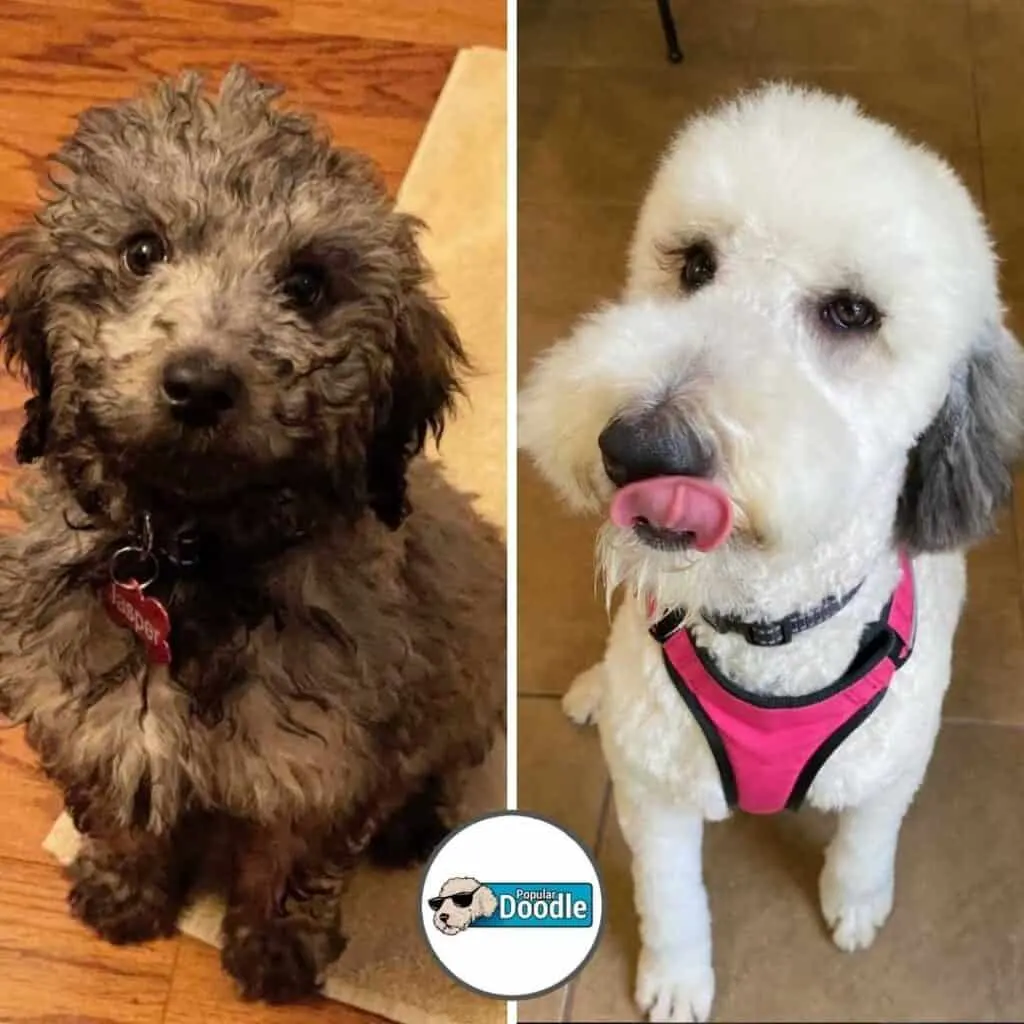
Believe it or not, both of these photos are of the same dog! Jasper’s hair has faded from a swirl of browns and grays to almost completely white with black-tipped ears. While she has a beautiful coat at both stages, it’s very different!
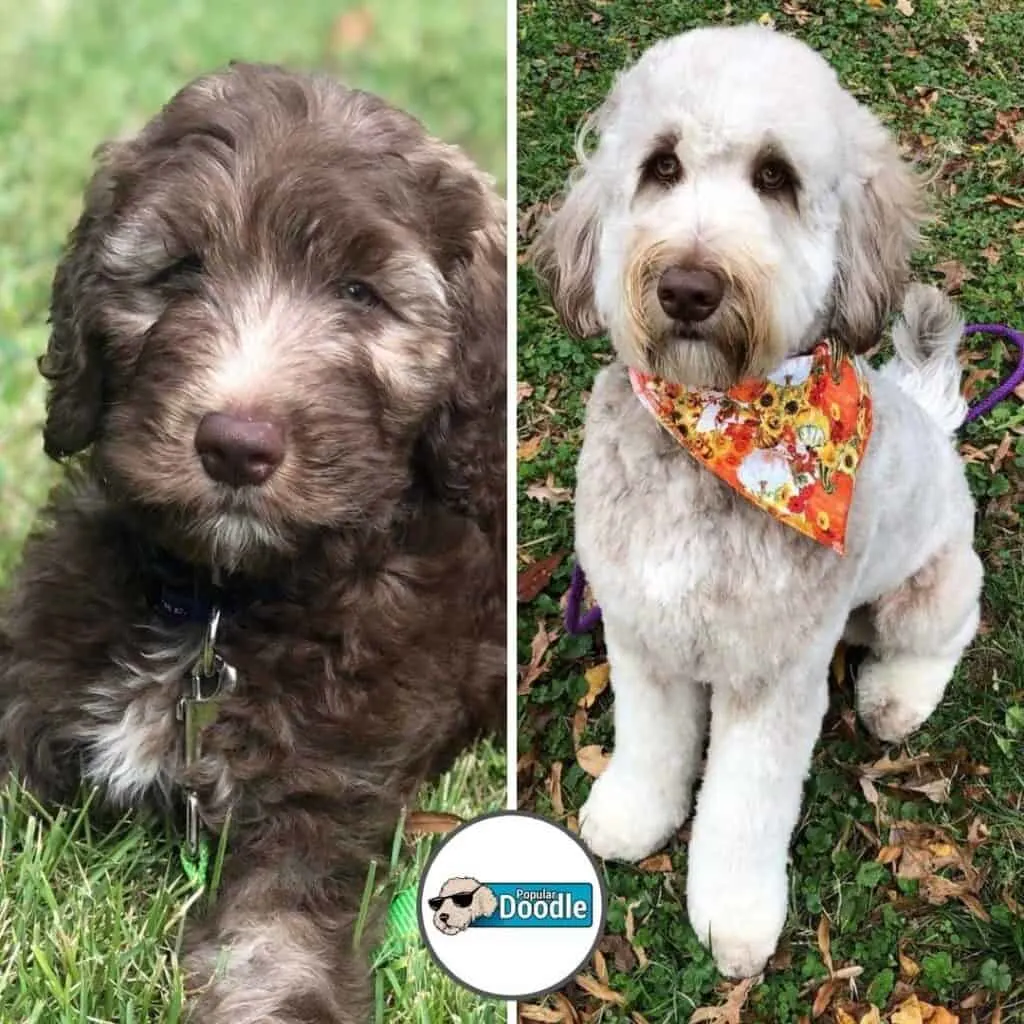
Mae is a multigen standard Goldendoodle. As a puppy she was a dark chocolate color with lighter phantom markings. As she’s grown older, that chocolate color has faded significantly to a gray with her phantom markings being close to white.
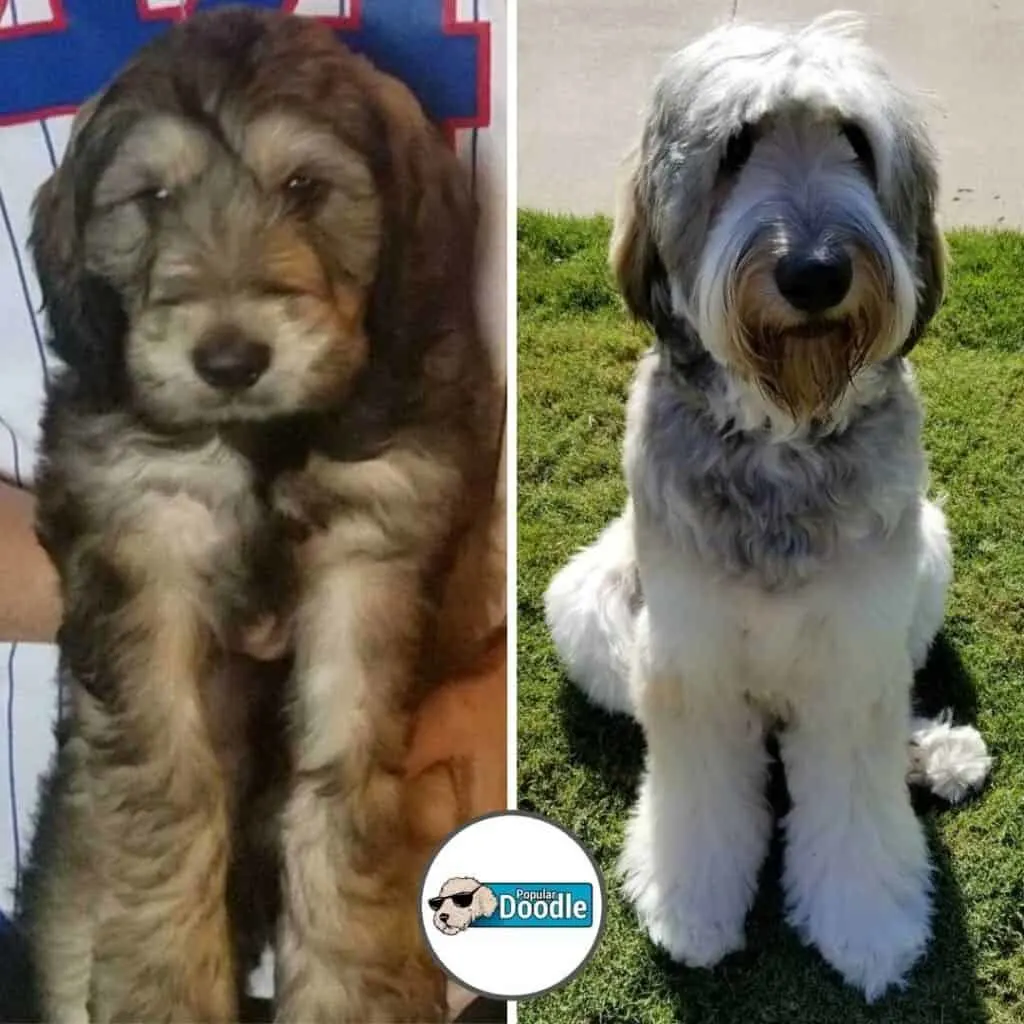
Rizzo is a sable phantom F2B Goldendoodle. He’s another great example of the fading sable gene at work, going from a darker puppy coat to a lighter adult coat.
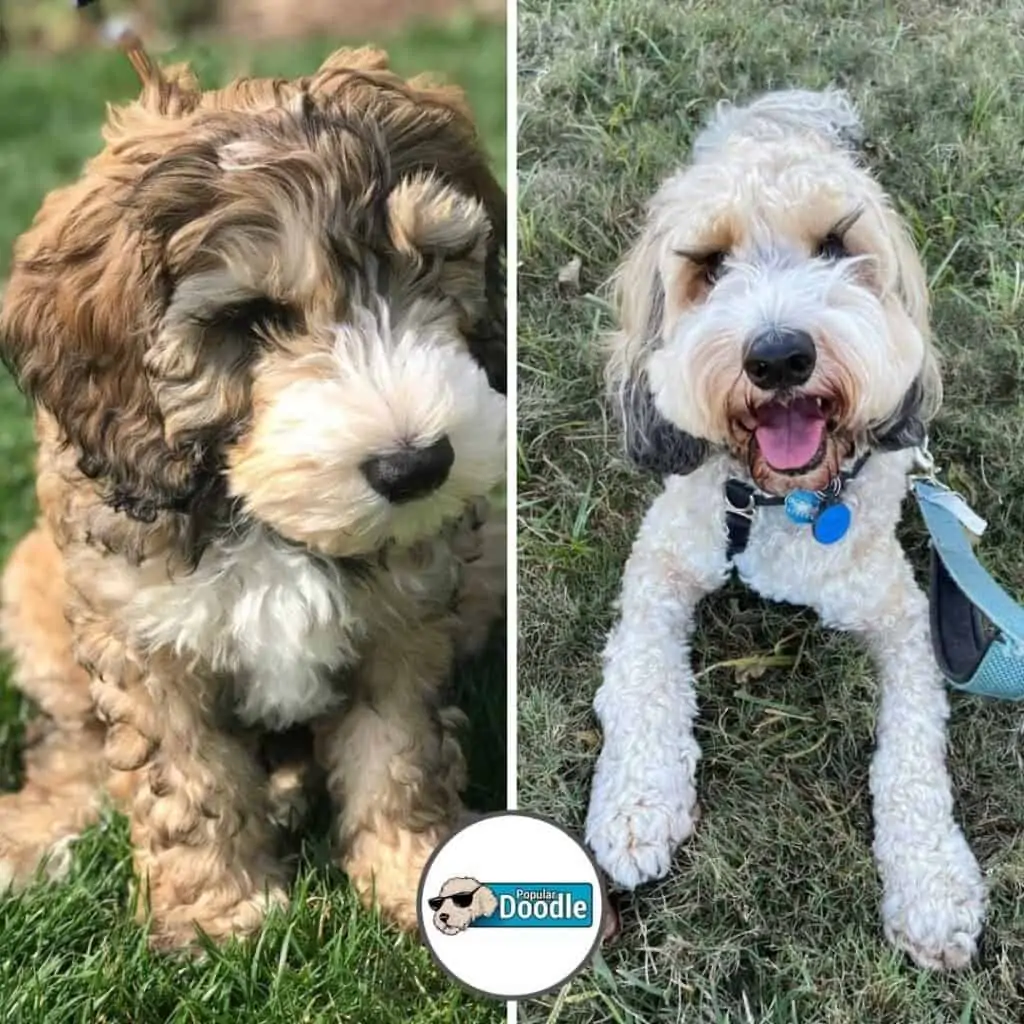
Rudy is an F1BB sable mini Goldendoodle. This F1BB generation means his DNA is very close to that of a purebred Poodle. On an unrelated note, can we take a second to appreciate those eyelashes?!
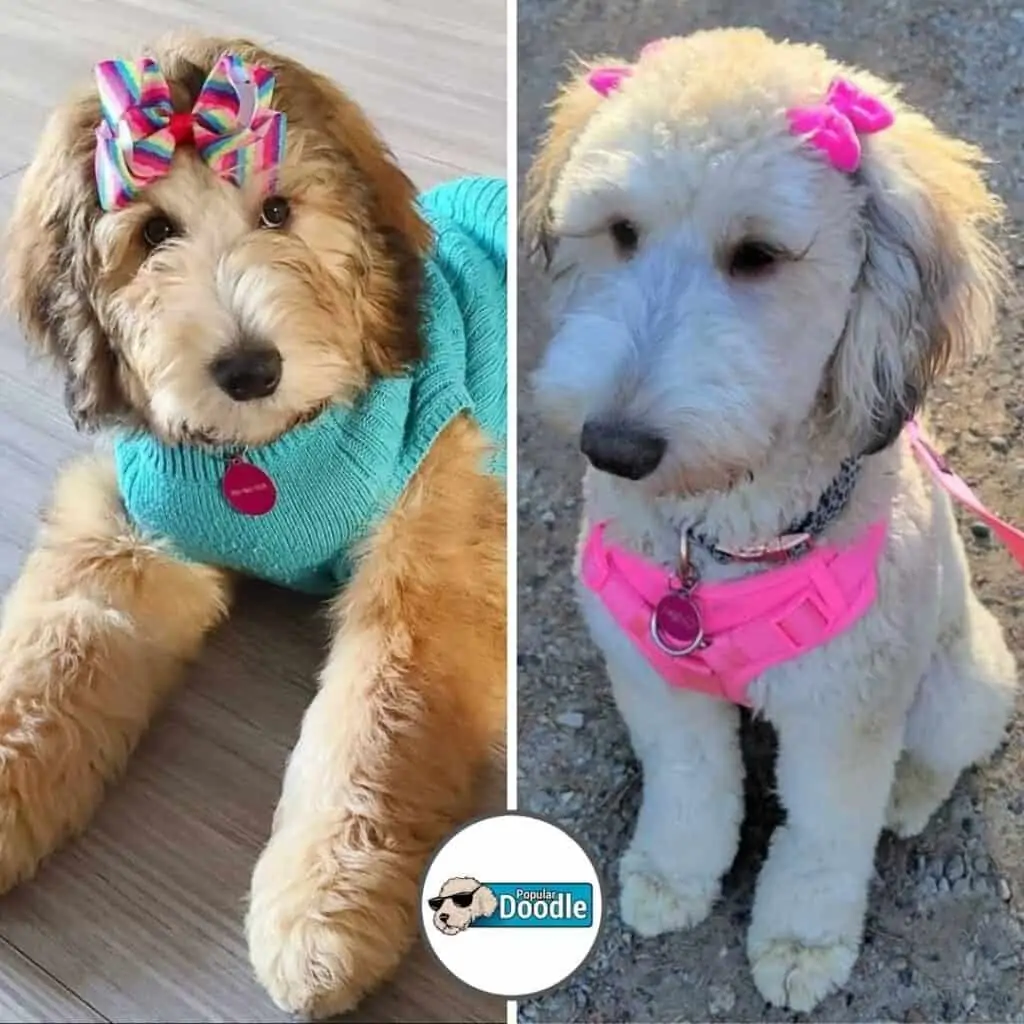
You’ll notice Gidget’s transition from an apricot color to a lighter cream color. Through the entire transition, she keeps those darker, black-tipped ears. Ears are the most common area where you’ll see evidence of sable markings as adults.
Selecting Your Perfect Puppy
Sable colored Goldendoodles aren’t one size fits all! These dogs can vary significantly in stature and come in teacup, toy, mini, medium, and standard sizes.
To learn about how big each of these sizes gets and which is best for your family, check our our article on Goldendoodle sizes!
Related: Mini Goldendoodle vs Goldendoodle: Which Size is Best? (QUIZ)
In addition to size, another major decision you’ll have to consider is which generation of Goldendoodle is best for you. Generations describe the lineage of your dog and how close in DNA they are to a purebred Poodle or Golden Retriever.
This genetic makeup can influence important characteristics in your Goldendoodle such as their propensity for shedding and whether they’re hypoallergenic or not.
The two most common generations of Goldendoodles are “F1” (50% Poodle, 50% Golden Retriever) and “F1B” (75% Poodle, 25% Golden Retriever). To grasp the full picture of generations and how they effect your future puppy, check out our easy-to-understand guide here!
Price of a Sable Goldendoodle
A Sable Goldendoodle will typically cost between $2,500 and $4,000. This is significantly above the average price of a Goldendoodle, thanks to how rare and highly sought after this coloring is.
While rescuing a Goldendoodle can be a great option for many people, if your heart is set on this color pattern, you likely won’t have much luck at shelters. Finding a trustworthy, reputable breeder is your best bet in this situation.
Read More: How to Recognize a Responsible Doodle Breeder (and Avoid Puppy Mills!)
Caring for Your Sable Goldendoodle’s Coat
Golden Retriever and Poodle crosses in general have high-maintenance coats that need frequent care to keep healthy and looking great.
Depending on which Goldendoodle hair style you choose, your dog will need to visit the groomer for a haircut every 1-3 months. You’ll also want to make sure you’re bathing your pup regularly, just not too often!
The most important part of taking care of your Goldendoodle’s coat is brushing. Brush your dog as frequently as possible—usually every other day is a good schedule.
Learning how to line brush is a great skill to make sure you’re brushing all the way down to the bottom of your dog’s coat. This will help prevent matting and help your Goldendoodle avoid the dreaded shave-down.
Just as important as your brushing frequency and technique are the tools you use. An everyday, generic brush from the pet store probably won’t cut it, especially if your dog has very curly Poodle-like hair rather than straight Golden Retriever hair.
My recommendation is the Chris Christensen Big G slicker brush. This is a professional-quality brush that does an amazing job of tackling the challenging coat of a Goldendoodle. Since using this brush, my Goldendoodle hasn’t had to deal with any matting!




![What is a Phantom Goldendoodle? [Photo Gallery & FAQs] phantom goldendoodle](https://populardoodle.com/wp-content/uploads/2021/08/phantom-goldendoodle-1024x536.jpg.webp)

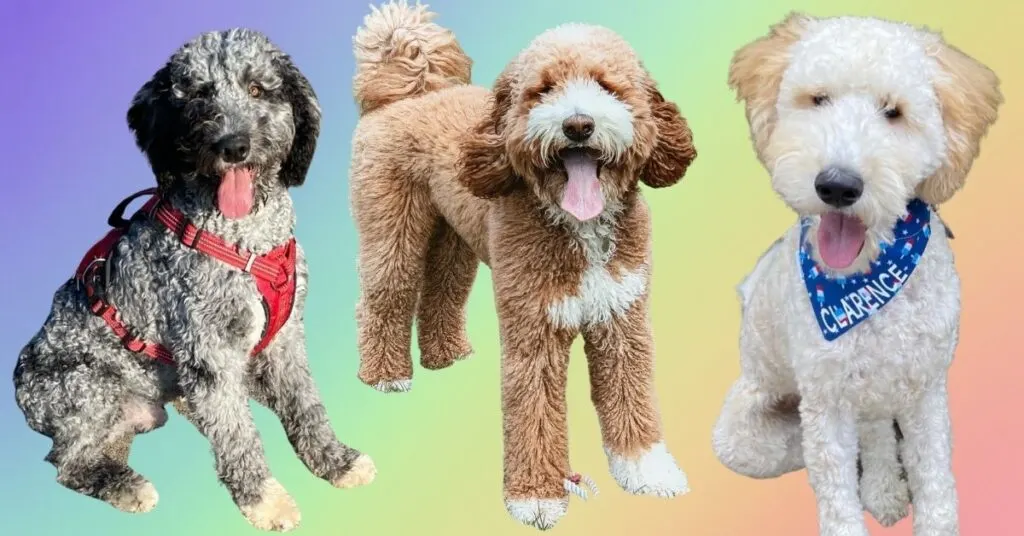
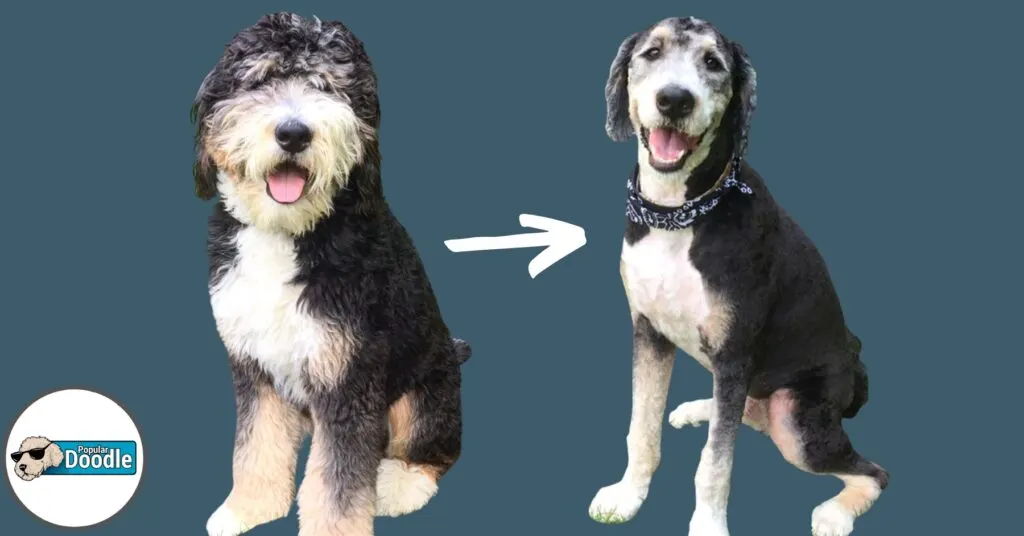
![What is a Sable Bernedoodle? [Photo Gallery & FAQs] what-is-a-sable-bernedoodle](https://populardoodle.com/wp-content/uploads/2021/06/what-is-a-sable-bernedoodle-1024x536.jpg.webp)
